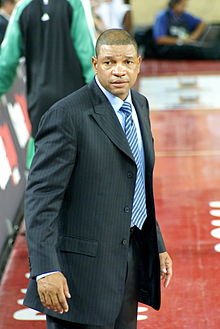 Fresh off my maiden voyage to the M.I.T. Sloan Sports Analytic Conference in Boston, I have been spending more time dissecting advanced stats.
Fresh off my maiden voyage to the M.I.T. Sloan Sports Analytic Conference in Boston, I have been spending more time dissecting advanced stats.
One of the important principles in using advanced stats to draw conclusions is to also know which stats don’t paint a complete picture.
I have found that looking at some of these team stats can tell us a lot on why good teams are good and why certain teams overachieve and conversely underachieve.
The San Antonio Spurs currently have the best record in the NBA after their 105-93 victory over Oklahoma City last night.
In looking at their overall rankings, it’s not hard to tell why.
They’re 6th in the league in offensive efficiency, 3rd in the league in defensive efficiency, and 2nd in effective field goal percentage. However, there is an intentional casualty of those stellar numbers. The Spurs rank dead last in offensive rebounding rate, which is by design.
 The Spurs put a premium on transition defense, and they’re willing to sacrifice offensive rebounding to do it.
The Spurs put a premium on transition defense, and they’re willing to sacrifice offensive rebounding to do it.
And they’re not the only ones. The Boston Celtics are second to last in offensive rebounding rate. Although their offense is not comparable to San Antonio’s (an unintentional sacrifice), their defense certainly is.
 Part of what makes their defense as good as it is, especially with a bevy of NBA geriatrics, is their emphasis on transition defense and the corresponding sacrifice of offensive rebounding. When Jared Sullinger was healthy, Boston had more of a presence on the offensive glass because, let’s face it, Sullinger is not exactly the swiftest guy running the floor anyway. Now, with Sullinger out for the year, Boston has, for all intents and purposes, punted offensive rebounding.
Part of what makes their defense as good as it is, especially with a bevy of NBA geriatrics, is their emphasis on transition defense and the corresponding sacrifice of offensive rebounding. When Jared Sullinger was healthy, Boston had more of a presence on the offensive glass because, let’s face it, Sullinger is not exactly the swiftest guy running the floor anyway. Now, with Sullinger out for the year, Boston has, for all intents and purposes, punted offensive rebounding.
Miami has gone the same way in reference to offensive rebounding. They’re 11th on defense, 2nd on offense, and 1st in effective FG%. Yet, they’re ranked 27th in offensive rebounding rate.
For a team that gives up most of its offensive rebounding to play better transition defense, they should be ranked higher than 11th. Frankly, that number would be significantly better if they didn’t spend the first two months of the season on a vacation from defense.
Another good place to see what good teams sacrifice is to look at turnover percentage. We’ve always looked at turnovers as bad. Mike D’Antoni was much more tolerant of turnovers because he viewed them as a necessary evil. Yet, when you look into the numbers, as was explained to me on Twitter by NBA.com’s brilliant Couper Morehead, all turnovers are not created equal.
The Oklahoma City Thunder are most certainly among the NBA elite. The Thunder are 1st in offense, 8th on defense and 3rd in effective FG%. However, they manage to achieve this peak efficiency in spite of ranking 28th in turnover percentage. Although I would never say that a team has a high turnover rate by design, there is a certain tolerance that Oklahoma City has to turnovers because of their style of play, a la Mike D’Antoni.
The Thunder are an uptempo team, ranking 8th in pace. They are extremely reliant on transition baskets as their primary way to get easy baskets, which can get tough in the playoffs. With how frequently they run, turnovers are inevitably part of the package. As long as the running is by and large effective, which it certainly is, the turnovers are part of the package.
On the other hand, a team like the Indiana Pacers sports the #1 rated defense in the league.